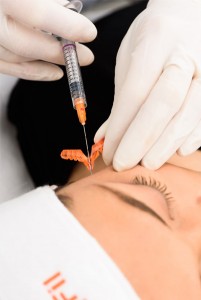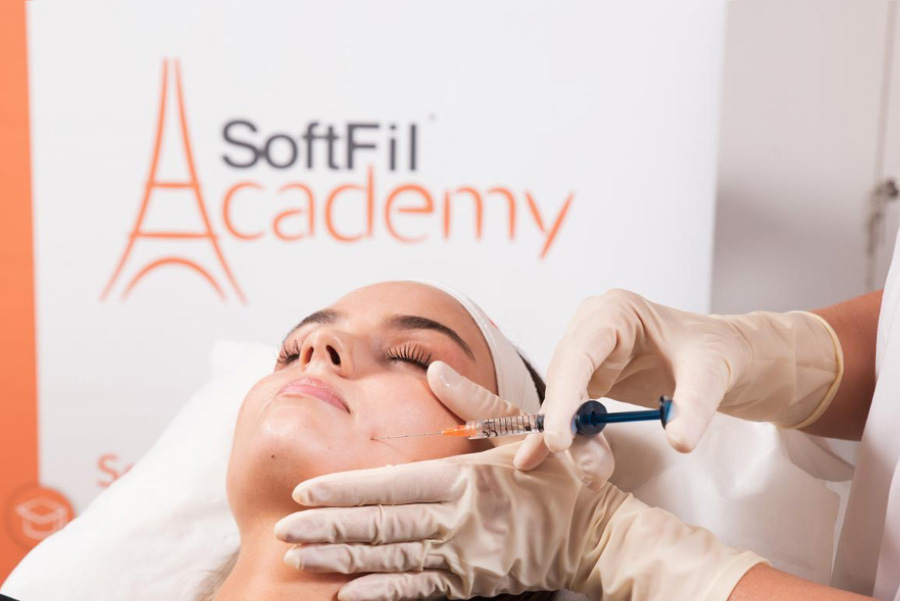The world of aesthetic medicine is constantly evolving and its market is growing rapidly. Several factors have reinforced the demand for aesthetic treatments, notably the rise of social networks or the use of teleworking software such as Zoom that puts users face to face with their image all day long. Social networks such as Facebook, Instagram and Tik Tok, which are omnipresent among all generations, stage perfect beauties with the help of filters and retouching. Beauty standards have never changed so quickly, and so has the demand from patients who wish to comply with them.
This new type of demanding patient is looking for painless and non-invasive anti-ageing treatments with fast and natural results. This demand has led to a real revolution in injection tools and techniques. Currently, there are two schools of thought in the injection techniques of fillers: needle injections and microcannula injections. In this article we explain the difference between the two techniques and what are the recommended uses for quality care.
Traditional use of the needle vs. safe use of the microcannula
Traditionally, aesthetic medicine fillers are injected using needles. Indeed, most fillers are still sold with injection needles, as if this was implicitly the recommended technique.

However, there are several advantages to using a blunt tip microcannula such as SoftFil® Classic and SoftFil® Precision instead for the injection of fillers.
Thanks to their rounded tip, micro cannulas remain the best way to avoid passing through a vein or artery. The use of needles or hyaluron pen can cause significant unsightly bruising or swelling, or worse, intravascular injections. When a needle is used, its sharp point penetrates deep into the skin. This is quite traumatic for the skin and the injected area. The consequences of a needle injection can be disastrous and can lead to blindness, stroke or necrosis. Thanks to its blunt tip, the micro cannula cannot pierce the skin and is a gentle and atraumatic procedure for the patient. The rounded shape of the microcannula tends to spread veins or arteries as it passes through the tissue. In addition, the aesthetic physician is able to feel the resistance of the structures through which a microcannula passes, which enables him or her to judge when and how to apply pressure or manipulate the direction of the microcannula.
 The insertion of the microcannula requires a pilot needle to form its entry point. A pilot needle has been invented and patented by SoftFil and is called SoftFil® EasyGuide. It allows to find the entry point in an instant and to inject easily and painlessly.
The insertion of the microcannula requires a pilot needle to form its entry point. A pilot needle has been invented and patented by SoftFil and is called SoftFil® EasyGuide. It allows to find the entry point in an instant and to inject easily and painlessly.
Also, the significant length of the microcannula compared to the needle is a strong argument in favour of the microcannula. Its length allows it to reach more areas of the face and body and to inject with fewer entry points in the skin. The microcannula is then used to pass through the entry point to the areas under the skin. One of the main advantages of blunt-tipped micro cannulas is the ability to use the same entry point without having to injure the patient with another needle prick. This automatic reduction of the entry points considerably reduces the patient’s pain and thus satisfaction. Its length and flexibility means a smoother and continuous distribution of the filler in areas that are difficult to reach, such as the jaw. A much shorter and more rigid needle has to perforate the skin several times in order for the filler to be delivered over the entire treatment area, so the choice of microcannula is less traumatic and painful for the patient.
What types of microcannulas for which injectable areas?
In addition to their effectiveness, safety and relatively low levels of post-injection pain, there are several types of microcannulas adapted for each use and for each type of aesthetic injection. We recommend the SoftFil® Classic and SoftFil® Precision ranges of microcannulas for users who are demanding in terms of the quality of their injection and the safety of their patients.
- 14G and 16G Microcannulas : face, arms and chest
- 18G Microcannulas : face contour, eye sockets, jowls, cheeks
- 22G Microcannulas : tear trough, jowls and cheekbones
- 23G Microcannulas : chin, retro-mandibular area, cheeks, tear trough
- 25G Microcannulas : chin, jowls, tear troughs, dark circles, glabella, nose, forehead, neckline and hands.
- 26G and 27G Microcannulas: lips, nose and eye contour area
- 30G Microcannulas : chin, expression lines and lips

As far as the length of the microcannulas is concerned, this will depend on the needs of aesthetic physicians but also on the depth of the injected area. For example, an injection at the level of the columella will only require a length of 13 while an injection of the lips will require a microcannula of 40. All the guides and tutorials for the appropriate choice of sizes are available on our platform for training in the use of microcannulas: SoftFil® Academy.
How to learn how to use a microcannula?
SoftFil® has understood for several years the importance of training in the world of aesthetic medicine. Learning is an integral part of the daily life of doctors who naturally wish to adapt their techniques to the latest developments. These injection techniques themselves take many years to master.
The SoftFil® Academy was created in order to satisfy a strong demand from healthcare professionals for training in cannula injection. The interest of the cannula for doctors and patients is no longer to be proven, but the training courses are very few in number and difficult to access. SoftFil® has therefore developed its own online training platform, accessible to all doctors at no cost. A webinar, called LIVE Masterclass, is broadcast every month with interventions from international experts and KOL. Tutorial videos are posted regularly to illustrate all the injection areas and different techniques for using SoftFil microcannulas. We also offer private trainings for doctors who wish to have a more personalised approach to practice live on patients with the expert doctor.

Several hundred international doctors connect every month to the events and online training courses offered by the SoftFil® Academy. Its ambition is also to meet doctors, especially at medical congresses as soon as the health situation allows it, for conferences, live injections and presentations by our experts.



